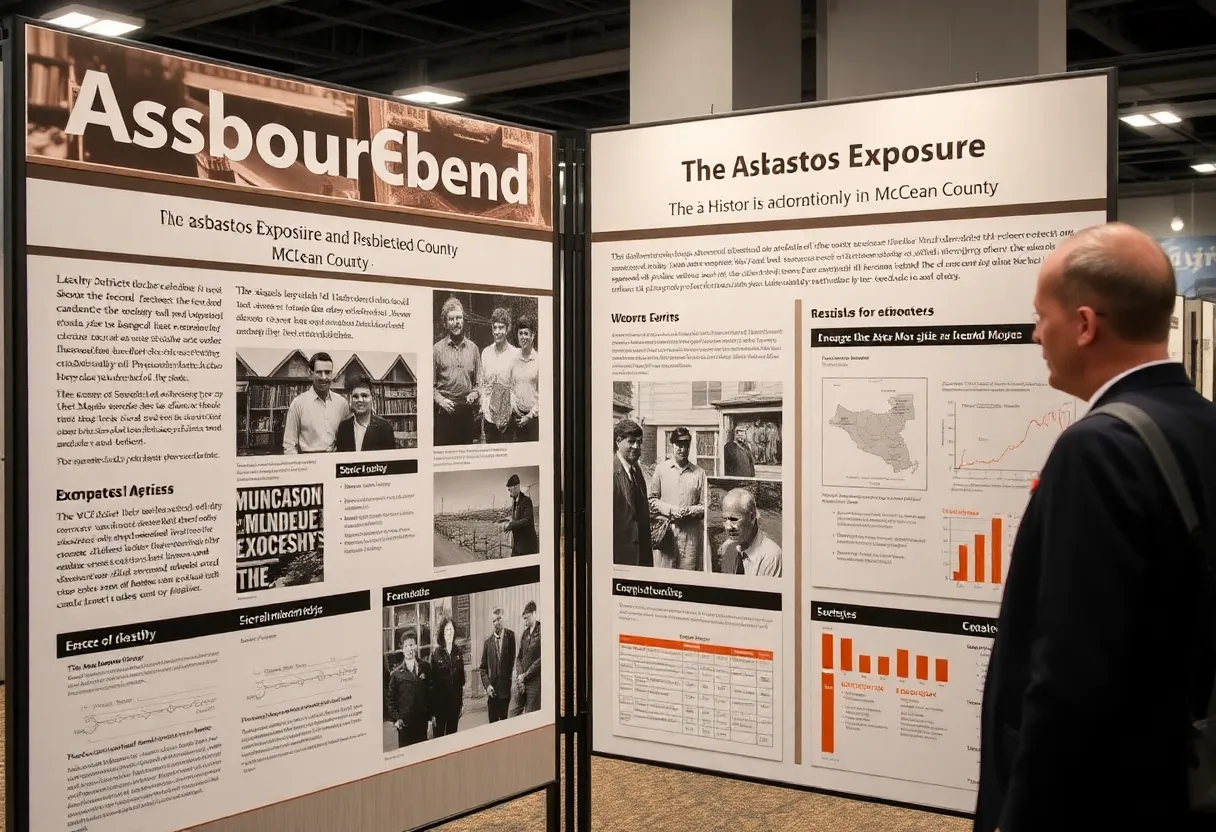News Summary
Unveiling the Dark Legacy of Asbestos in McLean County
In an insightful exploration of historical injustices, the A Deadly Deception: The Asbestos Tragedy in McLean County exhibit has opened its doors at the McLean County Museum of History in Bloomington, Illinois. This exhibit aims to shine a light on the disturbing legacy of the Union Asbestos and Rubber Co. (UNARCO) plant, which, during its operation, became a notorious site of worker exploitation due to hazardous asbestos exposure.
The UNARCO Plant: A Chronicle of Hazard
The tale of UNARCO began in 1951 when the plant relocated from Cicero to Bloomington, initially employing around 250 workers. Over the years, this number swelled, eventually providing jobs for approximately 2,000 local workers before its closure in 1970. For nearly two decades, workers were confronted with a grim reality — the plant distributed a staggering 5,000 pounds of asbestos daily, leading to an alarming annual total of about 650 tons. Such an environment left many workers in danger, as loose asbestos fibers floated in the air, causing what some described as a grim scenario where it looked like it was “snowing” within the facility.
The Human Cost of Asbestos
The devastating impact of this negligence has echoed through generations. Personal accounts from local families provide a heart-wrenching perspective on the tragedies that followed. The exhibit features a memorial wall dedicated to 133 individuals from McLean County who lost their lives to asbestos-related diseases. Among these victims is George E. Redman, who tragically died at the age of 43 in 1977 after working at UNARCO for over 20 years, and Willard Tipsord, who succumbed to mesothelioma at the age of 57 in 1989, after a diagnosis in his late 40s.
Exposing the Deception: Knowledge and Silence
Management at UNARCO was well aware of the dangers posed by asbestos yet chose to remain silent and neglectful. Instead of safeguarding their employees, the company primarily monitored workers’ health internally, masking the extent of the risks associated with asbestos exposure. When workers began to show potential signs of illness, the company would often “ease them out” and offer settlements that included strict nondisclosure agreements, thus silencing the voices of those affected.
Broader Implications: Secondary Exposure
The tragedy of asbestos exposure extended beyond the workers themselves. Many family members experienced secondary exposure from asbestos fibers carried home on clothing, affecting their health and well-being. This far-reaching impact underlines the need for awareness that industrial negligence can permeate communities.
Financial Fallout and Modern Awareness
After the plant’s closure and eventual bankruptcy filing in 1982, a trust fund was established for asbestos victims, managing to settle 188,406 claims totaling an astounding $262,248,992. This financial reckoning is a stark reminder of the human cost behind corporate mismanagement. The importance of sharing this history, as emphasized by the museum’s leadership, is crucial for preventing the recurrence of such tragedies in the future.
Exhibit Details and Community Involvement
The exhibit is now available for viewing on the third-floor Bender Gallery of the museum and will be open until summer 2027. The initiative has received support from the Midwest Region Laborers International Union of North America, emphasizing the collective responsibility to advocate for workplace safety. This exhibit not only memorializes those lost but also warns current generations about contemporary materials that may carry similar health risks, urging community involvement in promoting environmental health.
A Call to Action
As the shadows of the past linger, the stories told within this exhibit advocate for vigilance against the dangers of workplace exposure. The importance of safety measures and awareness of environmental risks cannot be overstated. This tragic chapter in Bloomington’s history serves as a solemn reminder and a clarion call for action to protect current and future workers from the perils of hazardous materials like asbestos.
Deeper Dive: News & Info About This Topic
HERE Resources
As Legal Storms Brew Over Talc Products, New FDA Rules May Change the Landscape
Exciting Developments on the Horizon for Springfield Crossing
Le Mars City Council Faces Critical Asbestos Decision Ahead of Centennial Building Demolition
A Mammoth Legal Challenge Against Johnson & Johnson Over Talcum Powder as 3,500 Claimants Step Forward
Asbestos Traces Linger: The Long Shadow of 9/11 on Public Health
Rising Concerns Over Silicosis Compensation Claims in the UK
Middlesex County Library Undertakes Major Asbestos Removal
Asbestos Exposure and Mesothelioma: A Growing Concern for Veterans
The Forgotten Heroes: Veterans’ Battle Against Asbestos Exposure
Federal Proposal Aims to Address Asbestos Risks in Talc-Containing Cosmetics



















